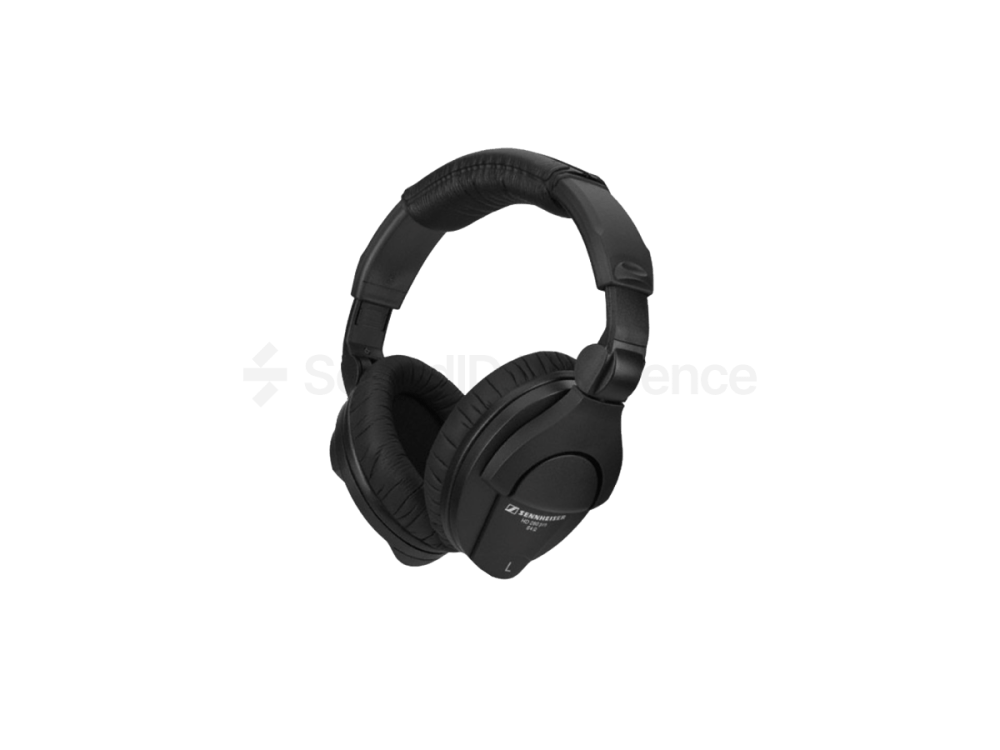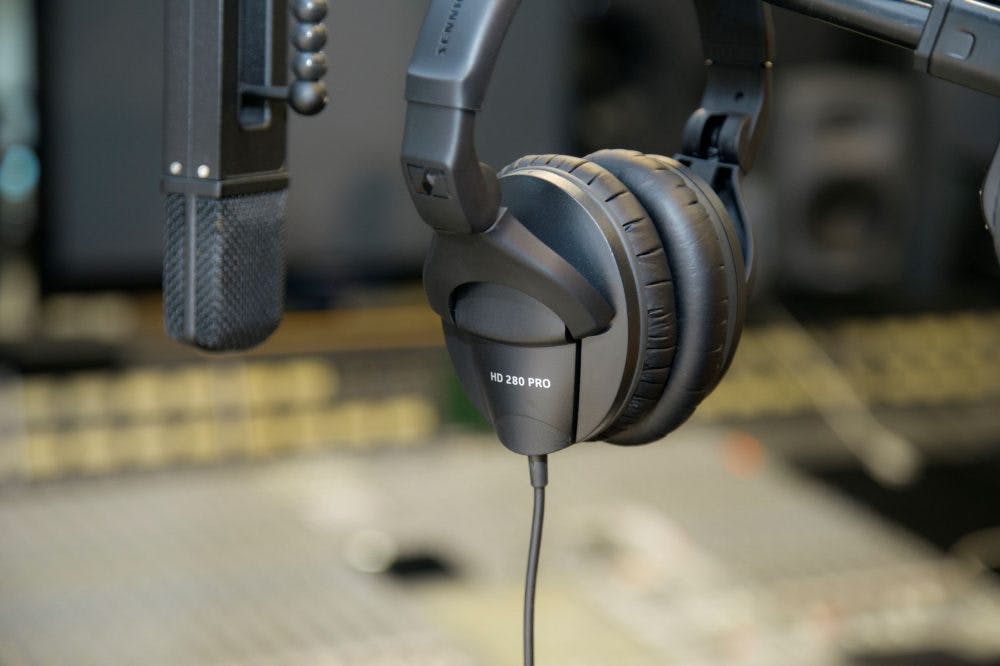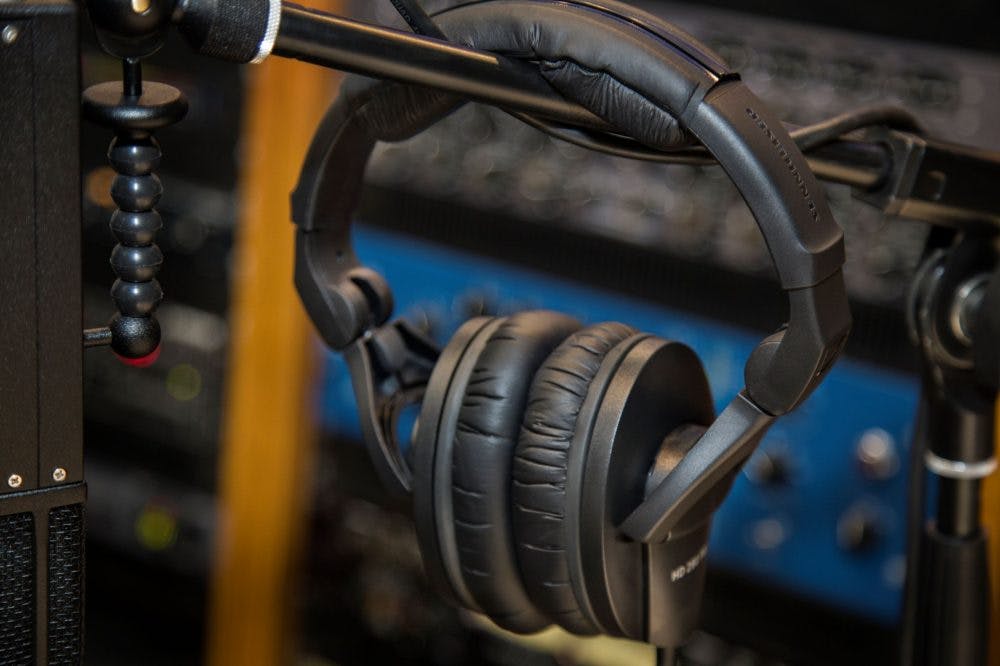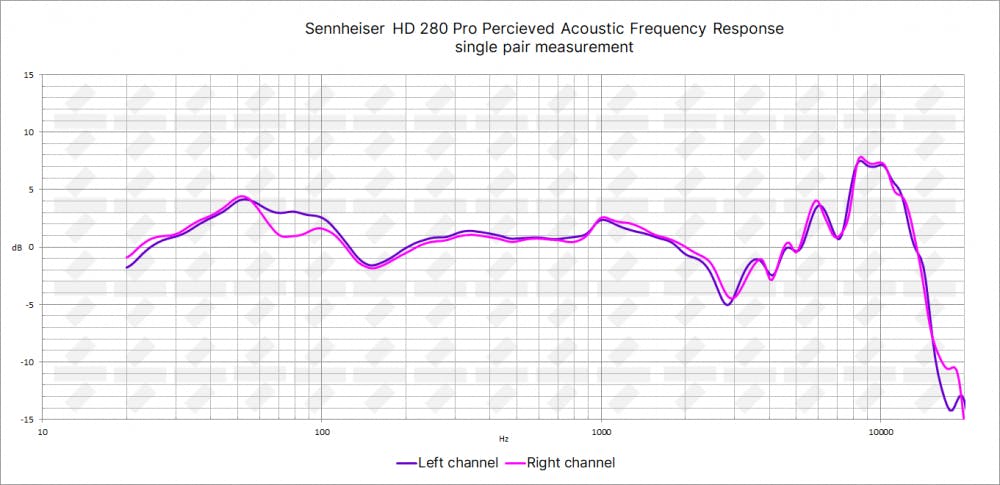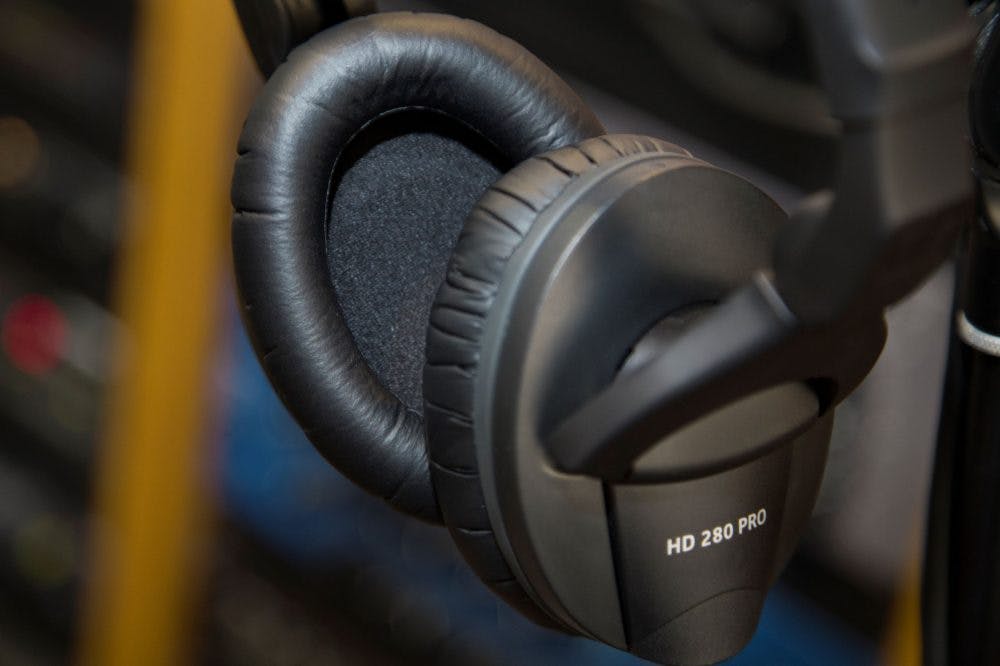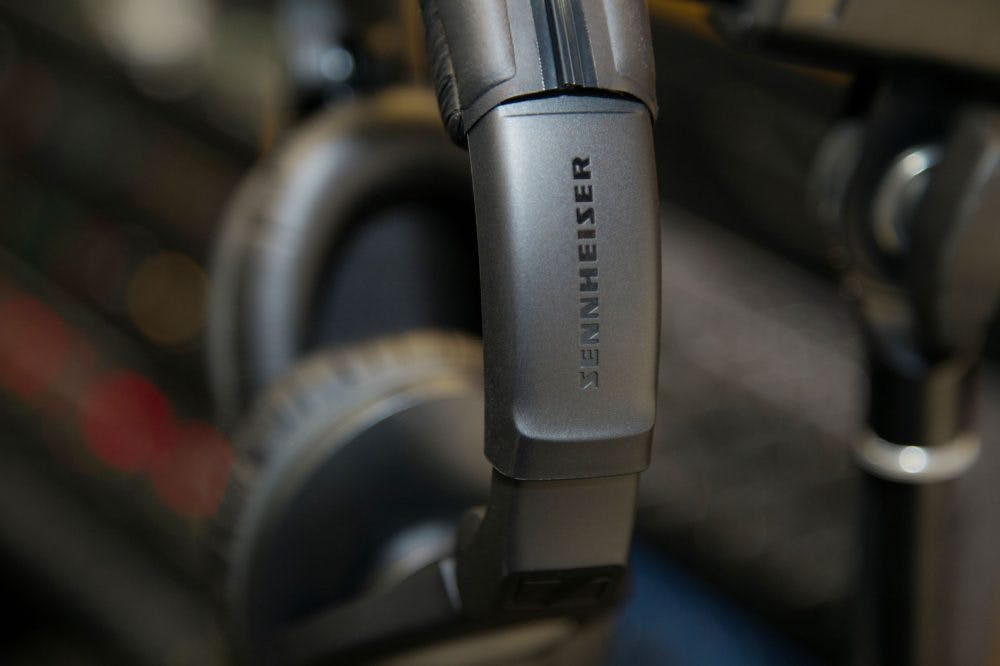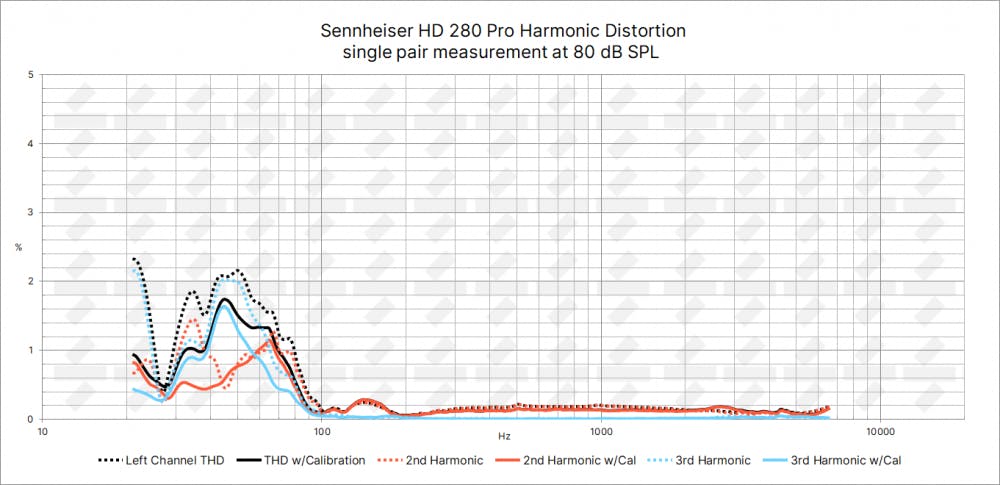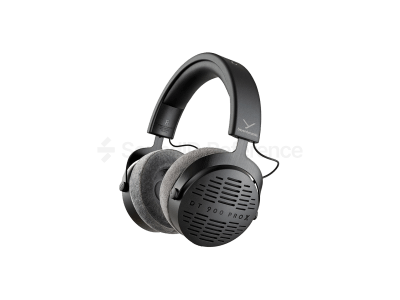Sennheiser sells HD 280 Pro as headphones suited for both mixing and recording. We haven’t encountered any headphone model that would truly excel at both of these tasks. But maybe they strike a balance so they’re good enough at both roles?
- Robust build
- Relatively neutral sound
Pros list with SoundID Reference calibration
- Increased high frequency extension
- Neutral frequency response
- Poor adaptiveness in the low end
- No detachable cable
These are very efficient headphones that can be easily pushed to extreme volume even from mobile devices.
The build, despite being all-plastic, feels very robust and ready to take a beating. This is also true for the thick and confidence-inspiring joints that enable ear cups to rotate. The headband is firm, yet flexible. If you take them by the ear cups and try to bend them in any direction you can get quite far without any clicking or cracking noises coming from the joints. On a less positive note, the fact that Sennheiser recently updated HD 280 Pro yet decided to keep the non-detachable cable, is a massive disappointment. Beyerdynamic DT 240 Pro, which can be considered a rival to HD 280 Pro, beats it when it comes to the build, and, in some markets, in price as well.
The overall shape of the curve deserves praise for a closed-back set! For most of the range, response stays within +/- 5dB and since the curve is relatively smooth, the coloration introduced by HD 280 Pro is not severe. If the adaptiveness issues were not as detrimental, there would be a great potential for them to be a great tool for numerous tasks.
It appears that manufacturing consistency leaves some space for improvement. One of our pairs had frequencies below 80Hz skewed to the left by 5dB which is a very noticeable and annoying difference, that results in diminished perceived bass response. The same pair also had narrow frequency band issues in the range above 10kHz. Apart from that, the mids were consistent for all pairs.
There’s always a trade-off between passive sound isolation and long session wearing comfort, and HD 280 Pro chooses the former over the latter. To increase the passive sound isolation HD 280 Pro uses relatively strong clamping force, yet the excessive force applied to the listener’s head becomes tiring rather sooner than later. Nevertheless, Joe Rogan manages to keep them on for several hours when hosting his podcasts, but maybe he’s just tougher than us.
HD 280 Pro’s aren’t an exceptional deal, but not a terrible one either. Audio-Technica ATH-M20x and Beyerdyanamic DT 240 Pro both are better than HD 280 Pros in some ways, the value being one of them, but neither can match Sennheiser’s clamping force, if that’s something you care about.
THD numbers are low, and this is one of the cases where with calibration enabled the distortion becomes even lower since HD 280 Pro sub bass extension is great and requires no boost by calibration. However it’s a difference only seen on the graph, regardless of calibration being engaged or not, no audible distortion artefacts were spotted in listening tests.
How accurate and consistent is the correction effect among different listeners?Unfortunately, adaptiveness is not great as the low-end perception can vary greatly for different listeners, as for some the large ear pads and strong clamping force will provide a very tight seal, while for others the ear pads will be too large and will let some bass energy escape, leading to decreased perceived bass response.
How much do they differ pair to pair in terms of frequency response?As previously mentioned, we had one problematic pair, but the rest of them were fine and pretty consistent.
Rating
Conclusion
Sennheiser HD 280 Pro’s offer good sound isolation, relatively neutral frequency response, a sturdy build and adequate price. While Sennheiser markets them as headphones for both mixing and recording, our take is that they’re very well suited for tracking, but not so much for mixing.
The low end response is a gamble due to the poor adaptiveness so getting the bass just right in the mix can be problematic. The strong clamping force, which’s great for tracking, makes them hard to wear for extended periods. With that said, if you get them for tracking and the perceived low-end response proves to be balanced for you, HD 280 Pro’s can come in handy for some production/mixing on the go.
Final Rating
Calibration Enabled
Calibration
